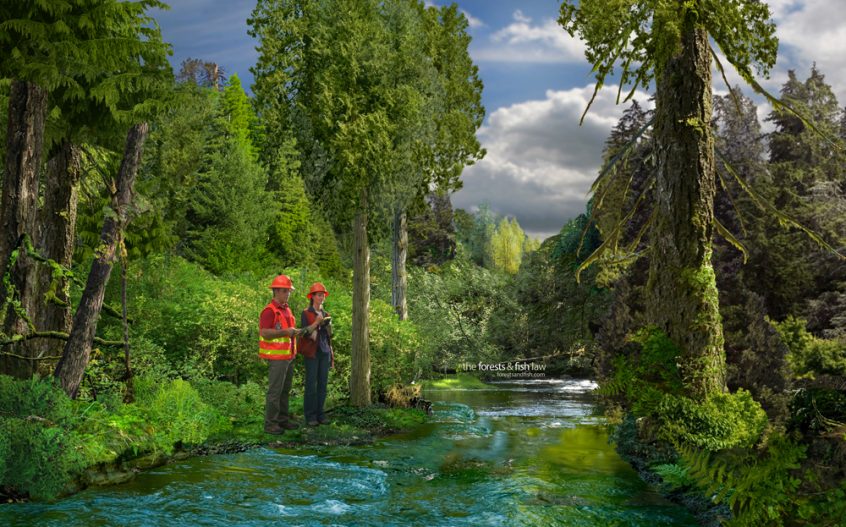Riparian Buffer Rules and Water Temperature
Introduction:
The application of science in environmental policy is crucial for ensuring the delicate balance between ecological preservation and economic activities. In the context of riparian buffer rules, the Department of Ecology’s (Ecology) temperature criteria for salmon streams have been under scrutiny, with scientific studies suggesting that current forest practices effectively maintain suitable water temperatures for fish. This blog post delves into the findings of the Hardrock and Softrock Experimental Buffer Treatment Studies and the proposed rule changes by small, large, and county forest landowners based on this scientific evidence.
The Science Behind Current Riparian Buffer Rules:
The Adaptive Management CMER science, particularly the Hardrock and Softrock Experimental Buffer Treatment Studies, demonstrates that existing forest practices rules successfully keep both non-fish and fish stream temperatures below the Department of Ecology’s salmon stream temperature criteria of 16⁰ C (60.8°F). Notably, the streams categorized as Tier II waters, with temperatures ranging from 12-14°C (54-58°F), indicate a temperature well below the regulatory threshold. This scientific evidence is essential in framing discussions around balancing productive industries and maintaining clean water.
Proposed Rule Changes:
In response to the scientific findings, small, large, and county forest landowners are advocating for rule changes that align with the observed data. The studies show that timber harvesting might cause a temporary increase of 0.5-1°C (0.9-1.8°F) in water temperatures, with a subsequent recovery to natural temperatures as vegetation regrows. As a proactive measure, these landowners propose doubling the length of buffers to a minimum of 1,000 feet upstream from the intersection of fish and non-fish streams and widening the first 500 feet to 75 feet. This proposal aims to ensure the protection of fish-safe temperatures.
Ecology’s Perspective and Potential Issues:
The Department of Ecology, however, seeks to impose a stringent limit of no change in temperature beyond the de minimis threshold of 0.3°C (0.54°F) in Tier II waters. This approach does not align with the adaptive management principles and the Tier II antidegradation policy, which allows for measurable changes if necessary and in the overriding public interest. The disagreement arises from Ecology’s interpretation of the antidegradation policy, treating any temperature change above 0.3°C as unacceptable.
Challenges in Ecology’s Approach:
Critics argue that Ecology’s approach, enforcing a strict limit without considering the broader context of economic development and water quality protection, contradicts the essence of the antidegradation policy. The 0.3°C limitation is perceived as arbitrary and does not account for natural variations in temperature caused by factors like windstorms or forest fires. The proposed restrictions also go beyond the intent of the antidegradation rules, which are designed to guide important environmental decisions rather than stifle growth.
Conclusion:
In conclusion, the ongoing debate highlights the complex interplay between scientific evidence, environmental policy, and economic interests. The science-backed proposal by forest landowners suggests a balanced approach, considering the temporary nature of temperature changes resulting from forestry practices. However, the challenge lies in reconciling divergent perspectives and ensuring that regulations are not unduly restrictive. As the Forest Practices Board grapples with decision-making based on experimental studies, the importance of long-term water quality monitoring cannot be overstated to inform sustainable and scientifically sound environmental policies.
Washington’s working forests are a vital part of protecting salmon, streams, and rural communities. Under today’s science-based forest practices, timber harvests maintain cool, clean water for fish — and now, landowners are proposing smart updates to make the rules even stronger.
